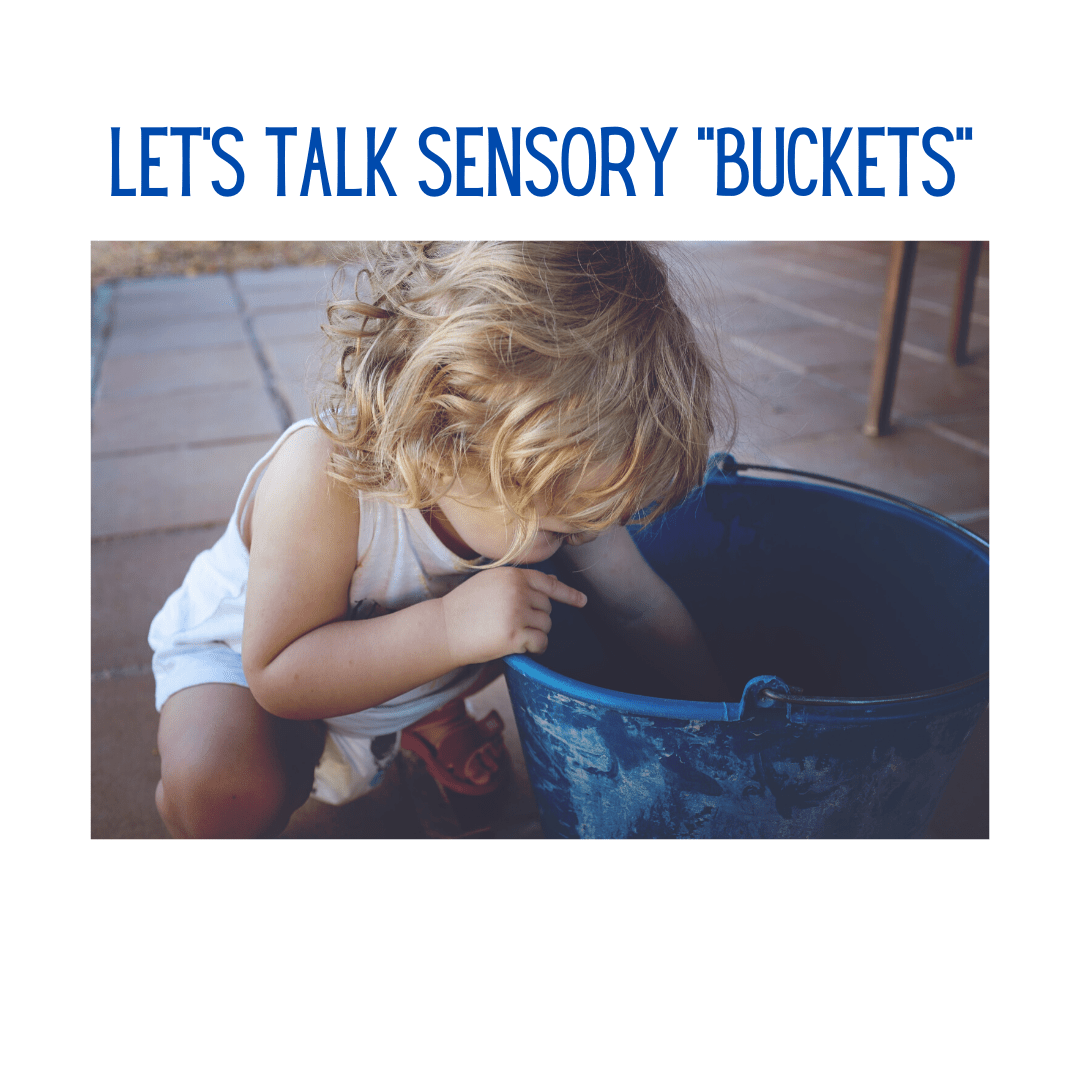Balancing Buckets
Sensory Load Explained and 6 Ideas to Help Restore Balance
As occupational therapists, one of the questions we get asked frequently is, “How can I stop the meltdown?” Truthfully, once a meltdown is started, it often needs to run its course. It serves a purpose of relieving pressure that has built up due to sensory overload.
One of the best analogies I have come across is to think of your sensory system like a bucket. Some people have very large buckets while other people have very small buckets. All of our sensory information (sights, smells, sounds, tastes, movement, tactile information, etc.) goes into the top of the bucket and the holes in the bottom of the bucket allow it to trickle out as we process the information. For most people a bucket that is ½ full is comfortable.
For people with a very large bucket or large holes that allow their bucket to empty quickly, they can feel unsettled as their bucket nears empty and they may begin feverishly seeking out sensory input to help fill it back up which can look like hyperactivity (moving quickly from place to place, climbing, jumping, rough housing) or meltdown (crying, screaming and/or aggression). If your child likes to crash and bash, a bean bag is a great option!

For those with smaller buckets, they may feel uncomfortable as their bucket fills up. As sensory experiences rush in and begin to overflow their bucket it starts sloshing out the top and causing an overload of information to be processed. These people tend to look for ways to limit sensory information quickly and this can look like a meltdown (crying, screaming, and/or aggression) or a shutdown (hiding, sleeping, or spacing out). Some will attempt to limit one type on input in an effort to manage information which might look like holding their ears, refusing to touch or be touched or refusing certain foods.

Green Toys Stacking Cups, Purple/Blue/Green
Some people feel more weight from one type of input when compared to others which can leave their bucket off balance. For example, some people are more sensitive to information they hear and can be overwhelmed in busy environments because of all of the different sounds. They might cover their ears to limit the sounds while others will begin tapping their foot or moving about the room in an attempt to even out their bucket with a different type of input.
Sometimes it is hard for a person to know when his or her bucket is getting too full or what to do to help empty the bucket and the person can end up melting down with little or no warning. Most children are still learning about their bucket, how big it is, what fills it and how to empty it to maintain a calm alert state. They rely heavily on the adults around them to model behaviors that will help calm and manage the overflow.
The following ideas are great for modeling calming strategies as well as creating a jumping off point for beginning to understand what your child needs to help empty his or her bucket. Come back in the coming weeks to learn more about how these strategies can be used in your routines.
Relaxing Music
Calming Space
Cold Play
Water Play
Deep Breathing
Oral Sensory Input
Are you interested in learning more about how your child’s sensory bucket may be filling up and ways you can help them empty or balance it out? An occupational therapist can help! Contact us to discuss how we can help.





